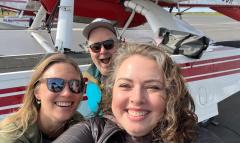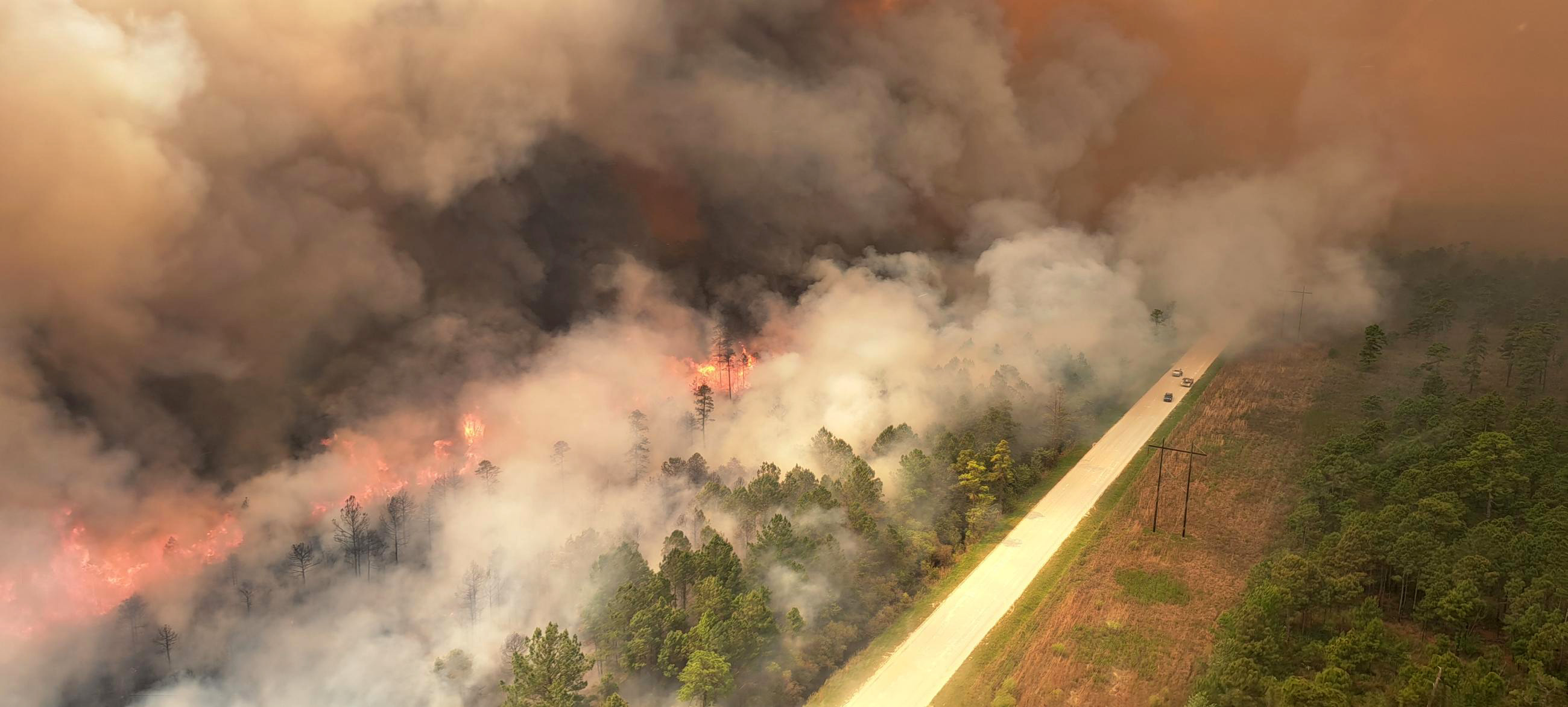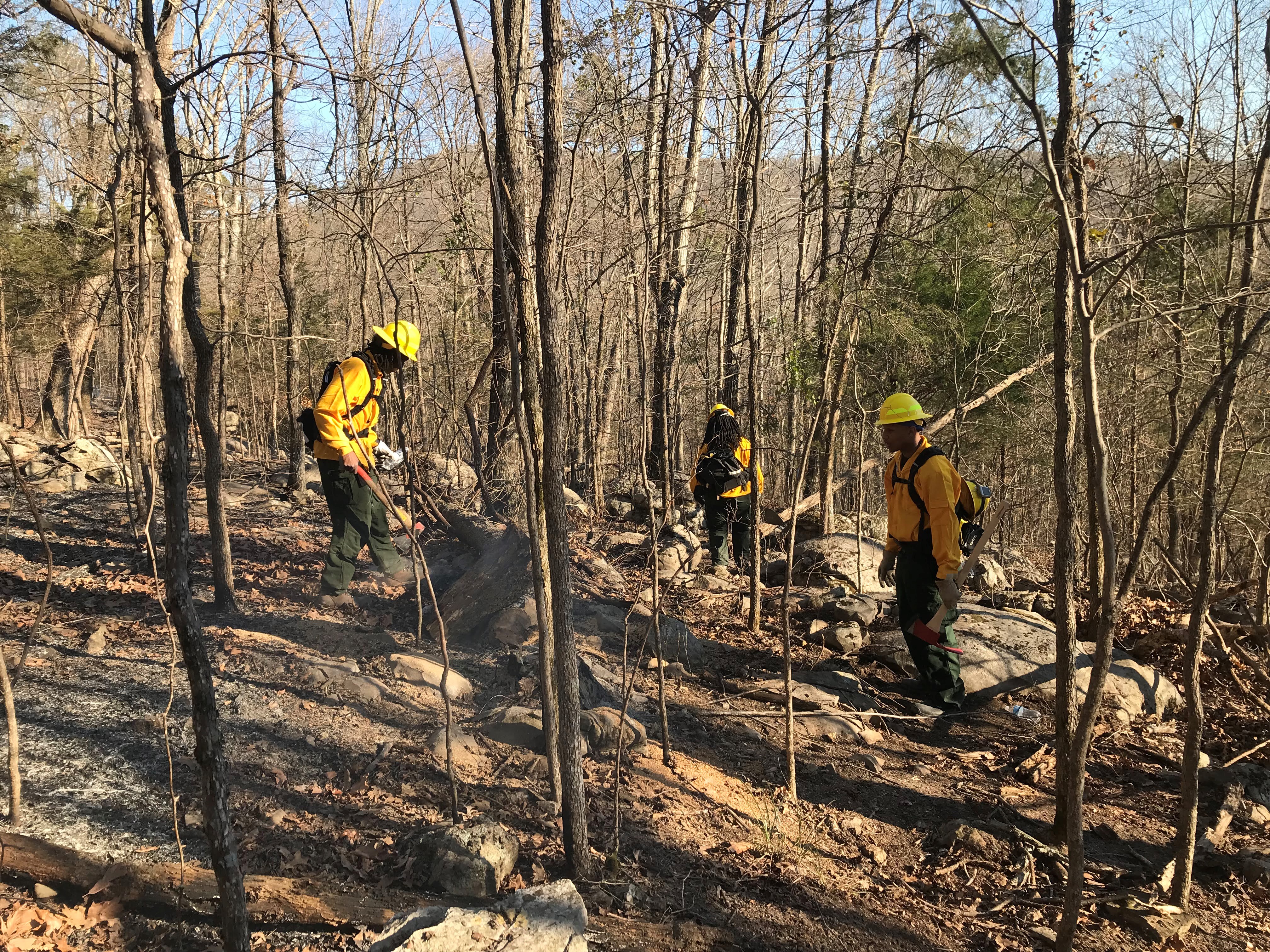US Forest Service based out of Cody, Wyoming. (Photo credit: Leslie Zollinger.)
Many outside the wildland firefighting community are unaware of the crucial role dispatchers play in metaphorically helping to stomp out the flames of a fire in our nation’s backcountry. Leslie Zollinger, a fire dispatcher for the U.S. Department of Agriculture’s Forest Service, is one such example of the dedicated professionals working to protect lives and property during wildfires that can consume hundreds of thousands of acres of forests and grasslands in any given year.
A devoted mother of three girls, Zollinger, like many dispatchers, spends much of her time in a dispatch center working wildland fires not just on Forest Service managed lands but wildland fires on other lands as well. However, she, like many others, holds qualifications that can put her in fire camp, at remote airports, and take her to every geographic area in the country – at all times of the year.
When Congress approved a temporary pay supplement increase for wildland firefighters, the dispatchers who play a central coordination role in the battle to extinguish massive fires weren’t certain they would be included.
“Many dispatchers work on the mobilization guides that provide direction for fire assignments. But it seems many aren’t aware just how critical our role is,” said Zollinger. “We were excited for the fire community as a whole, but we were unsure whether or not dispatchers would be counted among those who would receive the supplement.”
So those in the dispatcher community held their breath as decisions were made regarding implementation of the pay supplement outlined in the Bipartisan Infrastructure Law, and lived with that uncertainty until the money appeared in their banking accounts.
Leslie began her career working wildland fires in 2002 as a firefighter. At that time firefighters were paid enough that they could live without depending on other sources of incomes. Now, according to Zollinger, she sees firefighters who must sometimes live out of their vehicles while between assignments due to their seasonal appointments which result in months of unemployment. And to advance their careers, they often must live in remote areas that have neither affordable housing nor government housing—even if the firefighters are there to protect the local communities from wildfires.
“Government housing used to be the norm for those that lived temporarily in a location, especially locations where housing is already at a premium or the locations are isolated,” said Zollinger. “The poor quality of life, the stress, and the way we make it through every year, especially as seasonals, even permanent seasonals, has changed dramatically.”
Zollinger, who is a single mother, was hired fulltime by the Forest Service in 2020 as a GS-4. Because of the recent temporary pay supplement, she was able to, according to her, not fall below the official government poverty line.
“I took the fulltime position to have the health insurance I need to manage a very expensive chronic condition and to live as a single mom after my divorce. However, if I had to rely solely on the income I made from my Forest Service job, I would have fallen below the poverty line, even including 445 hours of overtime,” said Zollinger.
Dispatchers are highly skilled, and vacancies are a nationwide problem. The workload and stress can get so intense that many dispatchers put their own personal needs and those of their families secondary to making sure they provide what is needed for the literal boots on the ground needed during a wildfire.
“When a firefighter doesn’t have enough resources or feels as though the mission is beyond the scope of their abilities, there are systems and guidelines in place to allow firefighters to safely disengage,” said Zollinger. “Dispatch is left to do the best we can with where we are, which means prioritizing in a highly stressful environment.”
The purchase of Zollinger’s home in Cody, WY was critical to setting her up for success at her job as a dispatcher in the Forest Service’s office located in town. Rentals are notoriously difficult to find and afford in Cody. If she had to move to another location, the transportation costs of living away from the office would have either required her to find a job outside the federal government or leave the Cody Interagency Dispatch Center altogether.
“A move away from my current location would have taken the safety and stability I have been able to provide my daughters since moving here,” said Zollinger. “The supplemental pay eventually made the difference between being able to buy my house and the unknown. In fact, at the last minute, I wasn’t able to qualify for the loan program my lender was trying for. I had to switch loans and the down payment would have been beyond my means had I not gotten the supplemental pay.”
Because Zollinger is aware of the tight housing market in Cody, she is saving money to make improvements to her garage to provide seasonal housing to firefighters and dispatchers.
“I want to take the good fortune I’ve had and help others get a leg up as well,” said Zollinger. “We work so hard, have so much time away from family, friends, and have to often live a disjointed life of feast or famine, of no time off and no work, of being surrounded by people 24/7, then be removed from them entirely. It’s no wonder people in the wildland firefighting world struggle with mental health issues.
Zollinger added, “Like me, I want those who are scraping by to build a better life for themselves, while protecting our nation’s natural resources and communities, to be able to end their day somewhere that isn’t a car. Where they can clean up after a hard day in a shower that isn’t at a community gym. Where they can cook a meal that will fuel their bodies for the often 16-hour days they may have either in dispatch or in operations.”
More to learn
We invite you to read more firefighters’ stories to better understand their struggles and learn how the 2021 Bipartisan Infrastructure Law pay supplement has helped them and their families continue to serve the public as the USDA works to find a permanent solution to the challenges they face. Their stories represent the thousands of outstanding men and women that serve in a variety of emergency responder capacities across the Forest Service.
Editor’s note for Forest Service employees and families:
If you or someone you know are in distress or having thoughts of suicide, call 9-8-8, the National Suicide and Crisis Lifeline.
If you currently need care or mental health support, please see the available resources through the USDA Forest Service Employee Assistance Program.
The National Wildfire Coordinating Group Preparedness Guide for firefighters and their families and the companion Firefighter and Family Members’ Reintegration Guide are also good resources to support the health and well-being of the wildland fire community.
For more information on other resources available to you and your family members, please visit: Wildland Firefighter & Responder Resources.









